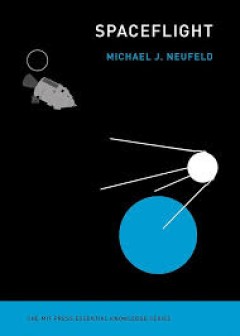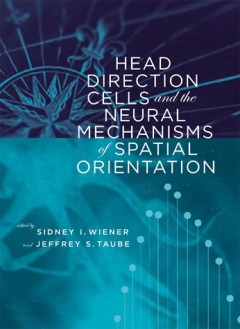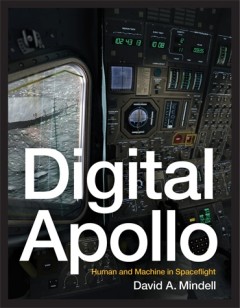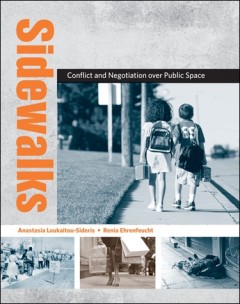Filter by

Spaceflight :a concise history
A concise history of spaceflight, from military rocketry through Sputnik, Apollo, robots in space, space culture, and human spaceflight today. Spaceflight is one of the greatest human achievements of the twentieth century. The Soviets launched Sputnik, the first satellite, in 1957; less than twelve years later, the American Apollo astronauts landed on the Moon. In this volume of the MIT Press E…
- Edition
- -
- ISBN/ISSN
- 9780262350457
- Collation
- 1 online resource.
- Series Title
- -
- Call Number
- -

Extraterrestrial languages
If we send a message into space, will extraterrestrial beings receive it? Will they understand?The endlessly fascinating question of whether we are alone in the universe has always been accompanied by another, more complicated one: if there is extraterrestrial life, how would we communicate with it? In this book, Daniel Oberhaus leads readers on a quest for extraterrestrial communication. Explo…
- Edition
- -
- ISBN/ISSN
- 9780262355261
- Collation
- 1 online resource (264 pages).
- Series Title
- -
- Call Number
- -

Head direction cells and the neural mechanisms of spatial orientation
"A Bradford book."Head direction cells -- neurons that fire only when an animal orients its head in a certain direction -- are found in several different brain areas, with different neurons selective for different head orientations; they are influenced by landmarks as well as motor and vestibular information concerning how the head moves through space. These properties suggest that head directi…
- Edition
- -
- ISBN/ISSN
- 9780262286169
- Collation
- 1 online resource (xxii, 480 pages) : illustrations.
- Series Title
- -
- Call Number
- 150

The human semantic potential : spatial language and constrained connectionism
"A Bradford book.""Drawing on ideas from cognitive linguistics, connectionism, and perception, The Human Semantic Potential describes a connectionist model that learns perceptually grounded semantics for natural language in spatial terms. Languages differ in the ways in which they structure space, and Regier's aim is to have the model perform its learning task for terms from any natural languag…
- Edition
- -
- ISBN/ISSN
- 0585032610
- Collation
- 1 online resource (xiv, 220 pages).
- Series Title
- -
- Call Number
- 100 REG h

Digital Apollo : Human and Machine in Spaceflight
How human pilots and automated systems worked together to achieve the ultimate in flight--the lunar landings of NASA's Apollo program.As Apollo 11's Lunar Module descended toward the moon under automatic control, a program alarm in the guidance computer's software nearly caused a mission abort. Neil Armstrong responded by switching off the automatic mode and taking direct control. He stopped mo…
- Edition
- -
- ISBN/ISSN
- -
- Collation
- -
- Series Title
- -
- Call Number
- -

The configuration space method for kinematic design of mechanisms / Kinematic…
A novel algorithmic approach to mechanism design based on a geometric representation of kinematic function called configuration space partitions.;"This book presents the configuration space method for computer-aided design of mechanisms with changing part contacts. Configuration space is a complete and compact geometric representation of part motions and part interactions that supports the core…
- Edition
- -
- ISBN/ISSN
- -
- Collation
- 1 online resource (xiv, 195 pages) :
- Series Title
- -
- Call Number
- -

Contagious architecture : Computation, Aesthetics, and Space
In Contagious Architecture, Luciana Parisi offers a philosophical inquiry into the status of the algorithm in architectural and interaction design. Her thesis is that algorithmic computation is not simply an abstract mathematical tool but constitutes a mode of thought in its own right, in that its operation extends into forms of abstraction that lie beyond direct human cognition and control. Th…
- Edition
- -
- ISBN/ISSN
- -
- Collation
- 1 online resource (xx, 370 pages) :
- Series Title
- -
- Call Number
- -

Off-Earth :ethical questions and quandaries for living in outer space
"Trade book looking at social and ethical issues of human space settlement"--OCLC-licensed vendor bibliographic record.
- Edition
- -
- ISBN/ISSN
- 9780262372534
- Collation
- 1 online resource
- Series Title
- -
- Call Number
- -

Sidewalks :conflict and negotiation over public space
Examines the evolution of an undervalued urban space and how conflicts over competing uses--from the right to sit to the right to parade--have been negotiated.Urban sidewalks, critical but undervalued public spaces, have been sites for political demonstrations and urban greening, promenades for the wealthy and the well-dressed, and shelterless shelters for the homeless. On sidewalks, decade aft…
- Edition
- -
- ISBN/ISSN
- 9780262255462
- Collation
- 1 online resource (x, 328 pages) :illustrations, map.
- Series Title
- -
- Call Number
- -

Dark star :a new history of the space shuttle
"Radical new perspective on the history of NASA's Space Shuttle program arguing that the shuttle failed because it was designed to fail"--OCLC-licensed vendor bibliographic record.
- Edition
- -
- ISBN/ISSN
- 9780262376655
- Collation
- 1 online resource
- Series Title
- -
- Call Number
- -
 Computer Science, Information & General Works
Computer Science, Information & General Works  Philosophy & Psychology
Philosophy & Psychology  Religion
Religion  Social Sciences
Social Sciences  Language
Language  Pure Science
Pure Science  Applied Sciences
Applied Sciences  Art & Recreation
Art & Recreation  Literature
Literature  History & Geography
History & Geography